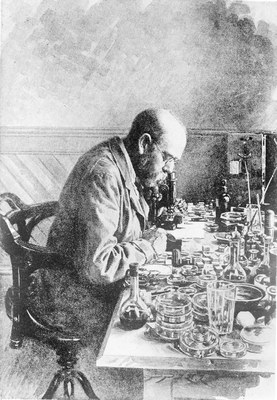Robert Koch in his laboratory in Kimberley
erstellt von
—
last modified
2020-05-25T11:04:19+02:00
Wellcome Collection, CC BY 4.0
Wellcome Collection, CC BY 4.0
Robert Koch in his laboratory in Kimberley, South Africa; photo engraving based on a gouache picture, 19th century, unknown artist; source: Wellcome Collection https://wellcomecollection.org/works/vcu5ftrh?query=M0000732, Namensnennung 4.0 International (CC BY 4.0) https://creativecommons.org/licenses/by/4.0/deed.de

